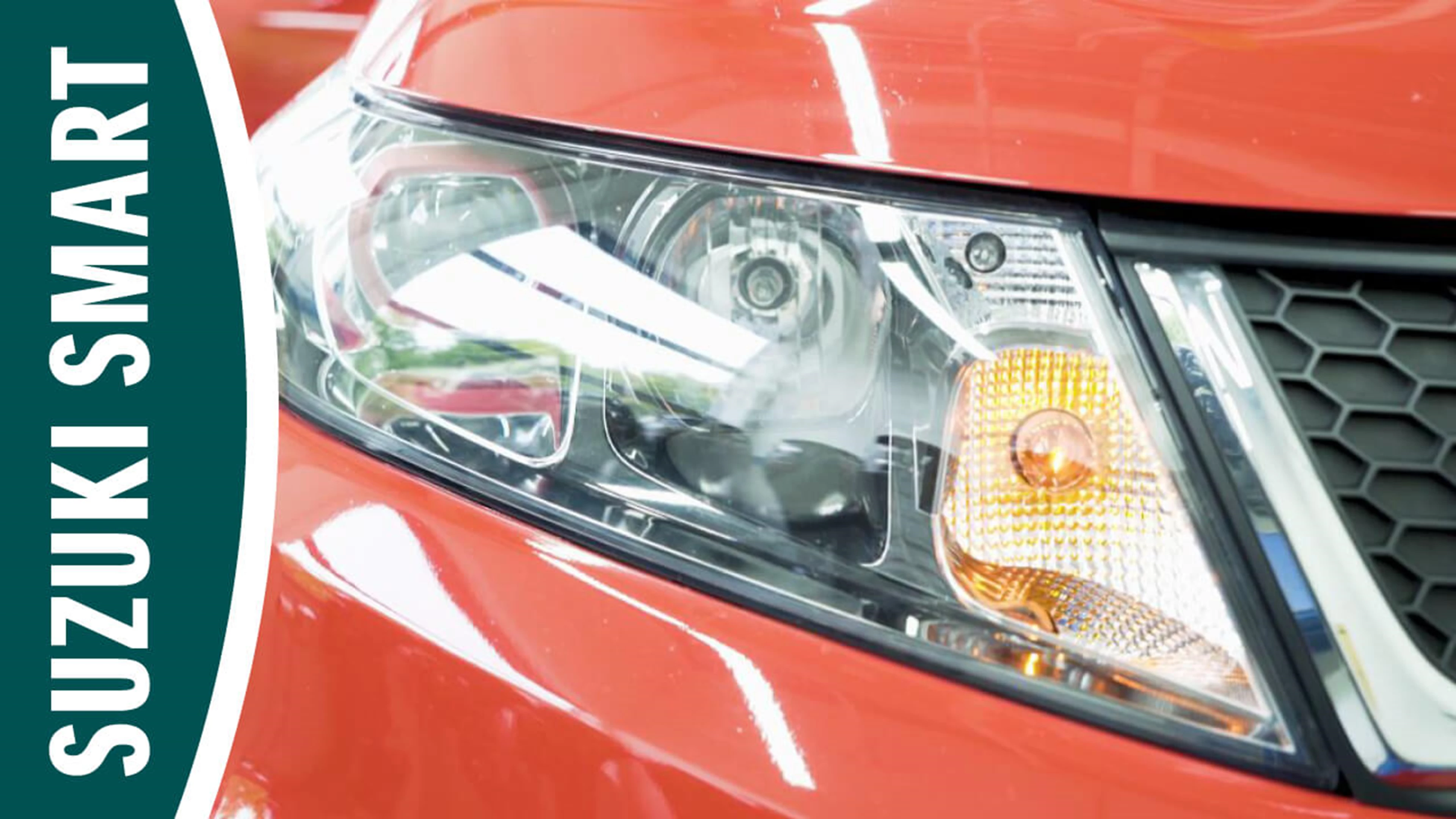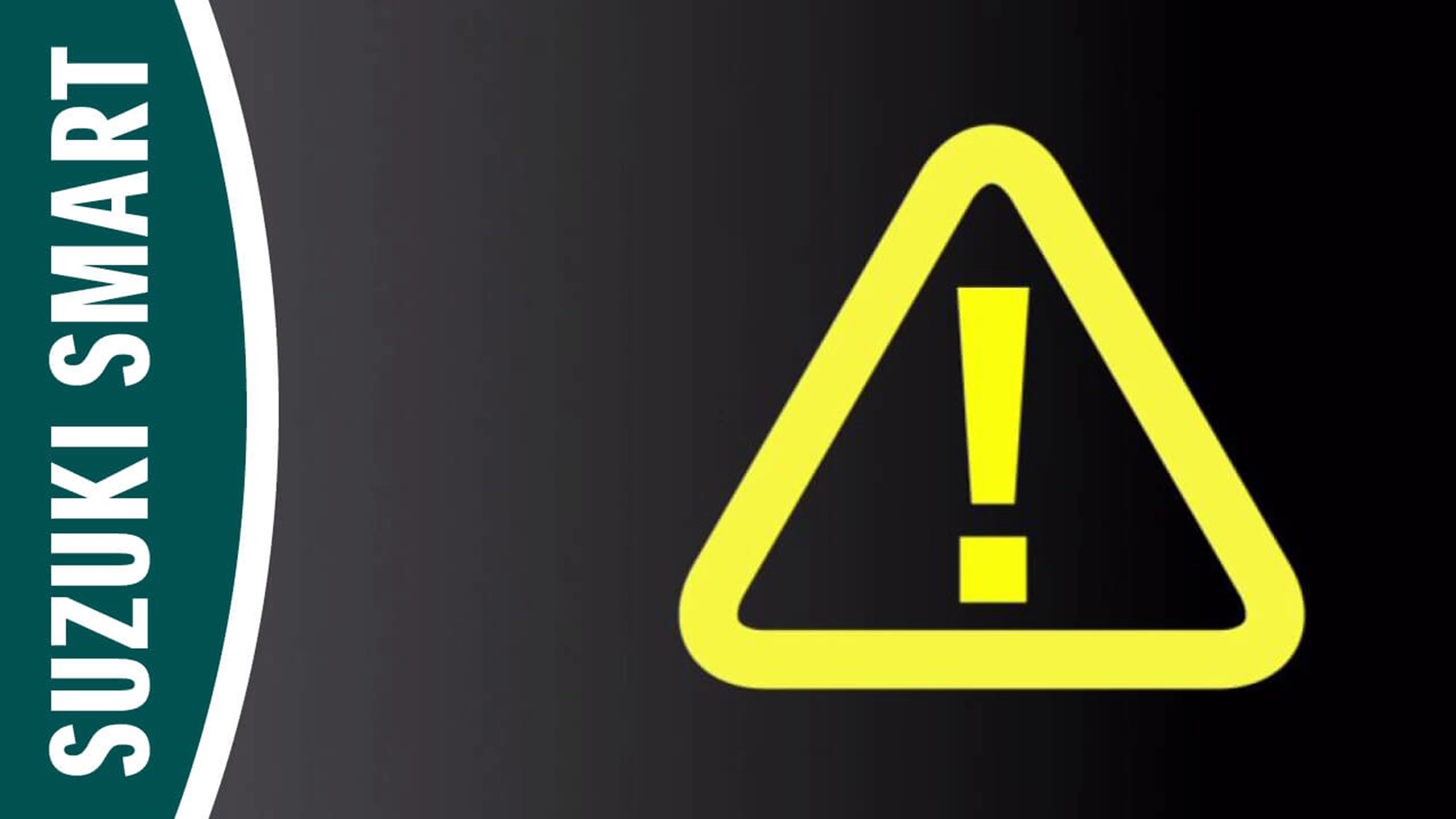Tips for driving safely
Staying safe is the most important consideration for all drivers. This is how you can do it, anytime, anywhere.
SAFETY CHECKS BEFORE YOU DRIVE
Keeping your car roadworthy is an ongoing process, but if you’re about to undertake a longer trip, you might want to also perform a fuller set of checks.

Instructions for
SAFETY CHECKS BEFORE YOU DRIVE
You’ll need to check your lights, for example. It’s a two-person job, one switching all of them on and off, one by one, from inside the car, the other checking that they all come on. If any of them don’t work, it could be a fuse or a bulb that’s failed, so refer to your owner’s manual on how to change them – or go your local Suzuki Service Centre.
Windscreen wipers are a feature that are often overlooked, but their role in maximising the driver’s visibility can’t be underestimated. So make sure they’re in good condition, replacing any that are worn. Even if they’re not worn, they might benefit from being wiped with a wet sponge or cloth, just to eliminate the chances of streaking.
And helping to keep the windscreen clear is the washer, so you’ll also need to check that the windscreen washer fluid reservoir is topped up.
Tyres are vitally important, so they need to be checked to ensure the tyres are not worn or bald or damaged (with visible cuts, cracks, bulges, irregular wear and, of course, punctures). You’ll also need to check the tread depth – you're looking to make sure it’s no less than 1.6 mm at any point on the tyre – and check the tyre pressure to make sure it is at the level recommended by Suzuki.
Checking the engine oil before a big trip is also a crucial task. Use the dipstick in the engine bay to check the oil level: if the residue on the dipstick isn't between the minimum and maximum markings you have low engine oil and will need to top it up.
WHEN TO CHECK YOUR TYRE PRESSURES
When a warning light appears on your dashboard it can be alarming and your first reaction could be 'what does that mean'?

Some lights can indicate a serious issue with the car, so it’s important that owners know what every light means.
During Autumn, with a sudden drop in temperature, the tyre pressure light is the most common warning light to appear. I can also appear when you have a puncture or a flat tyre.
You can find the recommended trye pressures on a sticker located on the door frame of your car.
Once the tyres have been inflated to the recommended pressure the warning light will go out after driving for a while.
Take a look at our Settings and Functions page for our 'Understanding your dashboard lights' video. Alternatively, your Owner's handbook will have a full list of dashboard warning lights.
CHECKING FOR TYRE DAMAGE
Tyres can become damaged at any time, however careful you are as a driver and however new or old your tyres are. As tyres are vital to the safety of your car – remember, your car is only connected to the road through them – it's important to check them regularly to ensure that they are within the legal limits. This will help you avoid fines, lower your overall repair costs, maintain the validity of your insurance policy and avoid some forms of damage.
Tyre wear is an inevitability of car use and your car’s tyres can also become damaged without your knowledge, with the most common forms being cuts, cracks, bulges, irregular wear and, of course, punctures. If you’re concerned about wear or damage, have your tyres inspected without delay at your local Suzuki Service Centre.
You should check your tyres once a week, looking for any obvious signs of damage, such as worn patches or cracks, and feeling the tyre with your fingers to see if anything is stuck in the tread. You’ll also need to check the tread depth: you’re looking to make sure it’s no less than 1.6 mm at any point on the tyre as driving on bald tyres can potentially be hazardous and carries a hefty fine as well as points on your license. Finally, check the air pressure to make sure it is at the level recommended by Suzuki.
Checking for tyre damage every week might seem overly cautious, but if your tyres fail to do their job, for whatever reason, the consequences can be serious – for your car and for you. Spending a few minutes every week is well worth it.
As the tread is the part of the tyre that comes into contact with the road, it's important to make sure you're not driving with dangerously worn tyres. Not sure if you are? Take a look at this table:
| Tyre tread depth | What does it mean? | What should I do? |
| 4mm | Your tyre is 62% worn | Inspect monthly |
| 3mm | Your tyre is 78% worn | Recommend changing it now |
| 1.6mm | Your tyre is 100% worn | This is the legal minimum so should be replaced immediately |
PREPPING FOR WINTER DRIVING
Winter driving presents a number of challenges, with wind and rain – not to mention ice and snow – making driving conditions very tricky.

Your car, therefore, has to be in tip-top condition to cope with everything that the winter weather throws at it. The best way to ensure this is to take it to your local Suzuki Service Centre for an annual winter check. The highly trained technicians will give your car a once-over, checking that everything’s in full working order – including making sure that those all-important tyres have enough tread.
But with the unpredictability of winter weather, and the possibility of unforeseen delays and stoppages, it's also a good idea to carry some basic equipment that will help you cope with the conditions and overcome some of the problems you might encounter.
So for example, an ice scraper and de-icer is vital to clear your windscreen before setting off on any journey. Having both in the car in winter is a no-brainer.
A torch is also a must-have in the car, in case a vehicle loses electrical power and, as a result, lights. A head torch is an even better option, as it leaves a driver’s hands free to change a wheel, for example.
In case of coming to a standstill, you should also carry a high-vis jacket to help you be seen on the roadside, while a warning triangle pre-warns other traffic.
It’s also a good idea to have a thick jumper, a warm coat and a blanket (perhaps even an emergency foil blanket) in the vehicle, just in case.
Spare batteries for your torch, plus a charged-up portable charger for your mobile phone, are important to stay powered up if broken down, while jump leads can also help you – or someone else stuck on the side of the road – to get started. A tow rope might be handy, to help avoid getting bogged down in snow.
Finally, make sure you have some water in the car, to stay hydrated, plus some food, just in case you get stuck.
HOW TO DRIVE ON SNOW AND ICE
Watch the video below:

Instructions for
Driving on Snow & Ice
The most important thing to remember about driving in snow and ice is that you should always try to avoid it as much as possible. Before making a trip in winter – especially one of any length – keep an eye on the weather forecast. If very low temperatures and snow are forecast, ask yourself if your trip is strictly necessary. Even if you have four-wheel drive and winter tyres, the roads could become impassable and filled with other vehicles that are stranded, blocking your progress.
But here are a few useful tips that could prove helpful.
The first crucial thing to remember when driving in winter is that stopping distances are 10 times greater in ice and snow, so you’ll need to slow down and keep extra space between yourself and the vehicle in front. If you do have to brake suddenly, you can also work with the ABS anti-lock brake system by coming on and off the brake pedal with your foot (called cadence braking), which could save you a few valuable metres.
When driving in snow and ice it is important to know what gear to drive in. If you pull away from a standing start in second gear, the chances of the wheels not being able to get any traction and slipping will be reduced. When going uphill, try not to change gear, while downhill is best in third or fourth gear, to minimise the chance of skidding.
If you do find yourself skidding, turn into the skid, keeping your eyes fixed on the direction you want to head, lift your foot off the accelerator and apply the brakes gently.
If, however, you do get stuck in snow, you’ll need something to help the wheels of your car to get some traction. A floor mat from inside the car could do the job or some cat litter. Yes, cat litter: as part of a winter survival kit, it’s worth carrying a bag in the boot of your car, just in case you get snowbound.
Finally. in foggy conditions – when visibility is 100 metres or less – you should switch on your fog lights. It's what they’re for.
SUZUKI BLIND SPOT MONITOR SYSTEM
It doesn't matter how careful a driver you are, you can't react to something which you can't see. This is why we have developed the Suzuki Blind Spot Monitor System. By utilising an array of radars surrounding your vehicle, the Suzuki Blind Spot Monitor System will alert you with both visual and audio warnings when there is another vehicle or object in your blind spot when driving, keeping you safe when changing lanes or reversing in a busy car park.





